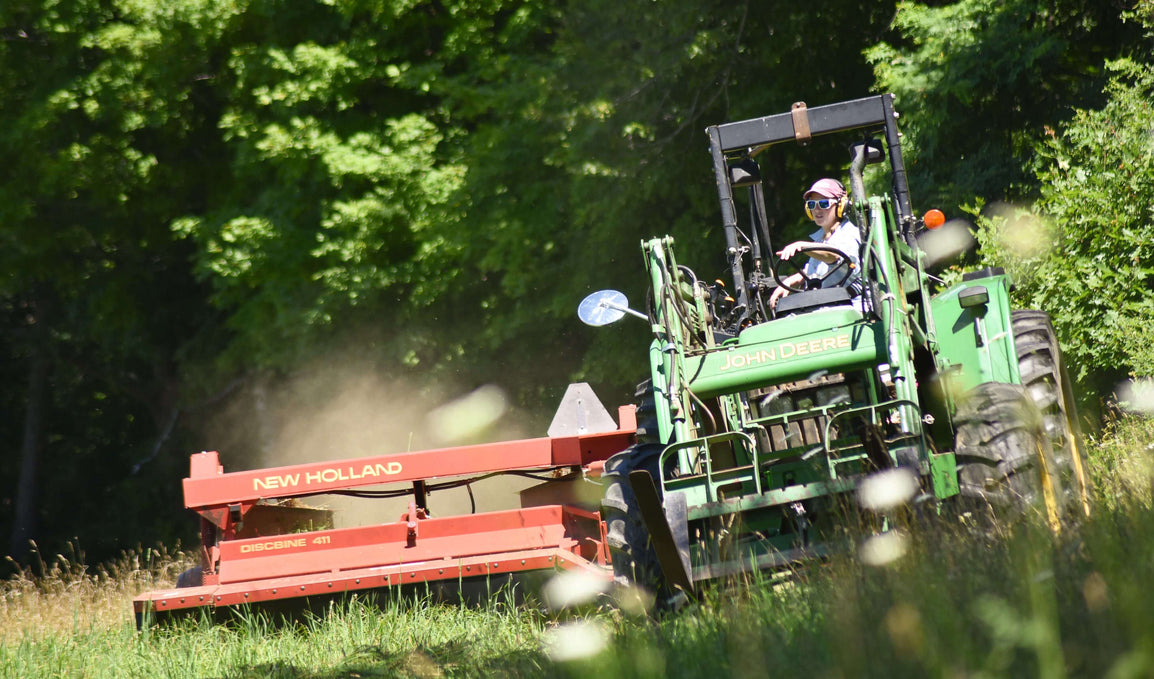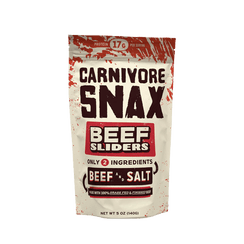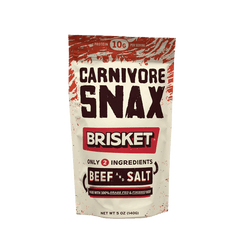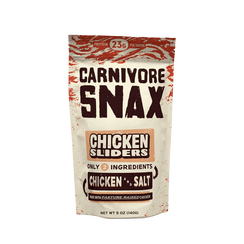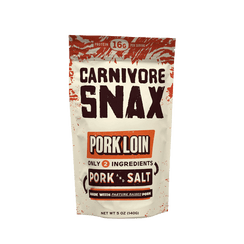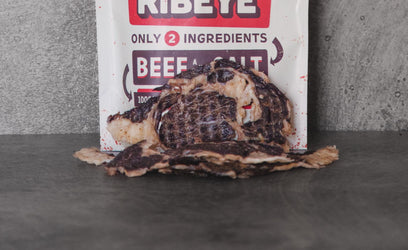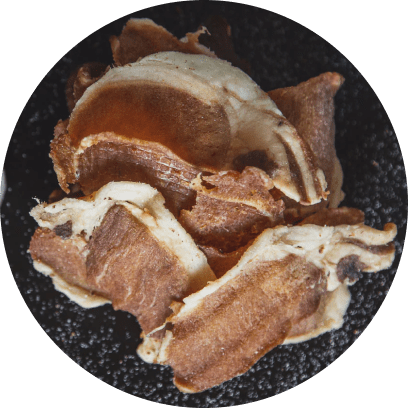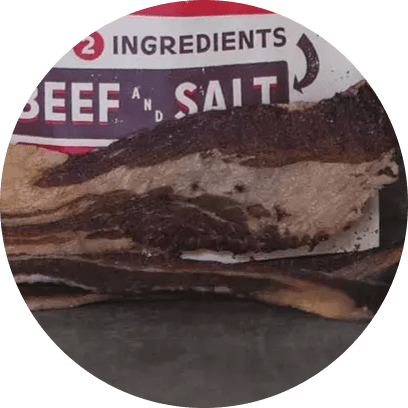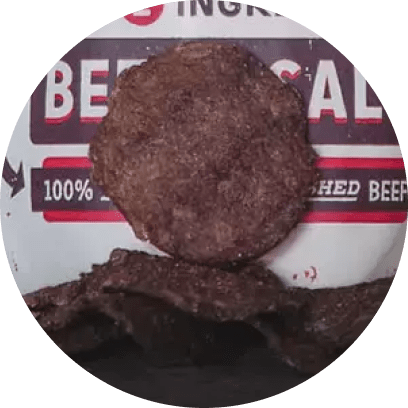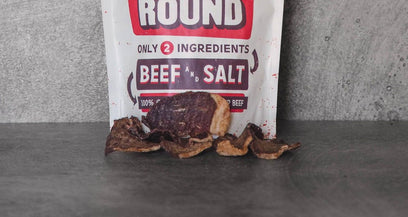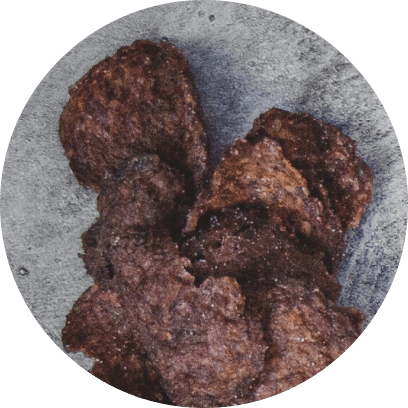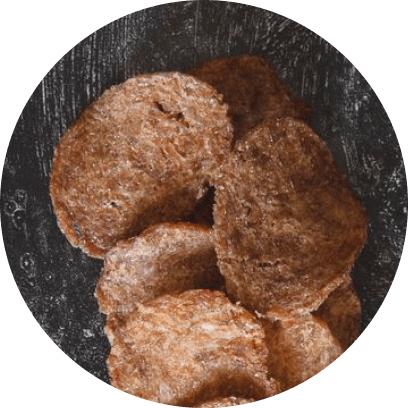THE CARNIVORE DIET BENEFITS




The constant battle against weeds, pests, and soil degradation can make farming feel like a constant uphill battle. But what if there was a way to turn nature into your ally, restoring your land's vitality and improving your farm's productivity simultaneously?
There is - and it’s more affordable and easy to manage than you may think. The best part? It’s 100% natural. Enter: cover crops for regenerative farming.
Cover crops might just be the unsung heroes of agriculture as a simple yet transformative farming practice. They hold the potential to revitalize our farmlands and revolutionize our food systems.
But to harness their full potential, you must understand their role, benefits, and best practices for their use. That’s where we come in.
Today, we’re going to cover (pun intended) everything you need to know about regenerative agriculture cover crops. Whether you're a seasoned farmer curious about regenerative practices, or you're just starting your journey into farming altogether, this guide is for you.
We're going to delve into everything you need to know about cover crops for regenerative farming - why they're essential, how to choose the right ones, and how to implement them effectively on your farm.
First things first - what exactly is cover cropping?
What are Cover Crops for Regenerative Farming?
Cover crops, a cornerstone of regenerative farming techniques, are plants grown primarily for the benefit of the soil rather than the crop yield. They are commonly used to suppress weeds, manage soil erosion, help build and improve soil fertility, and control diseases and pests.
As the name suggests, these are planted to cover the soil after farmers harvest the main crop. They are left to grow for a while and then plowed under to increase the organic matter, nutrients, and beneficial life forms in the soil.
This practice can help farmers maintain a healthy, balanced soil ecosystem that can sustain more vigorous crop growth. We’ll expand on the benefits of cover cropping below.
Why They’re So Important to a Regenerative Farm: Cover Cropping Benefits
Cover crops provide a plethora of benefits that make them indispensable to regenerative farming. They eliminate the need for certain synthetic inputs while also improving the soil itself, which is the overarching goal of regenerative farming in general.
To get a bit more specific, cover cropping can lead to lower costs while preserving our lands. That’s really what it comes down to. And you don’t have to take our word for it - one farmer was able to reduce his costs by $670,000 a year by investing in cover cropping.
Other farmers that have reported success using cover cropping include Brad Lauber of Lauber Seed Farms. His corn bushels are on track to produce a whopping produce 270-280 bushels per acre.
All of this is to say, there is a reason to take the time to implement cover cropping in your plot of land as well. Let’s take a closer look at these cover cropping benefits.
Soil Health & Fertility
Cover crops improve soil health by enhancing the organic matter content and structure, leading to better water retention and nutrient availability. They also fix nitrogen in the soil, reducing the need for synthetic fertilizers.
Because regenerative agriculture is all about improving the conditions of the soil, cover crops play a profound role in any regenerative farm.
Pest & Weed Management
Cover crops can help reduce the occurrence of pests and diseases by disrupting the life cycles of pests and by boosting the presence of beneficial insects. They also suppress weed growth by outcompeting them for resources and by physically covering the soil, preventing weed germination and growth.
Water Conservation & Quality
By protecting the soil surface and improving soil structure, cover crops enhance water infiltration and storage, reducing runoff and erosion. This not only conserves water but also improves water quality by preventing the leaching of nutrients and pesticides into water bodies.
Carbon Sequestration
One of the biggest benefits of regenerative agriculture is its ability to sequester carbon, as this prevents it from escaping into the atmosphere and contributing to excess greenhouse gasses.
And as you’ll learn in our article addressing how regenerative agriculture sequesters carbon, much of this is attributed to cover cropping. They capture CO2 from the atmosphere and store it in the soil, helping mitigate greenhouse gas emissions.
Our Advice on Implementing Cover Crops in Your Regenerative Farm
Transitioning to a regenerative farming model that utilizes cover crops is an involved process, but it doesn't have to be daunting. Plus, when considering the benefits we’ve described above, it’s well worth the time and effort.
Below, we offer some insights and advice to help you make the most of cover cropping in your regenerative farming efforts. First things first - we need to discuss choosing the right cover crops for regenerative farming.
Choosing the Best Croper Crops For Regenerative Agriculture
Choosing the right cover crops depends on your specific goals, local climate, and the needs of your primary crops.
For instance, if you're looking to increase nitrogen levels, legumes like clover, peas, or beans might be your best bet. If erosion control is the main concern, grasses with their extensive root systems, such as rye, can be a great choice.
Remember, diversity is key. A mix of different cover crops can provide a range of benefits, from soil health enhancement to pest management.
It's also worth consulting with local agricultural extension services or other regenerative farmers in your area for advice tailored to your specific situation. This is a new journey for you, but it’s not one you have to face alone. Rely on the farming community to help you feel confident getting started.
Taking Care of Your Cover Crops
Cover crops need attention and care, just like your cash crops. You'll need to manage their growth to prevent them from becoming too invasive or going to seed, which could make them a weed problem in themselves.
Timing is essential when planting and terminating cover crops. Plant them as soon as possible after harvest to give them ample time to establish before winter.
When terminating, it's typically best to do so a few weeks before planting your main crop to allow the cover crops to decompose and release their nutrients.
Preventing Interference With Cash Crops
While implementing cover crops for regenerative farming can provide numerous benefits, they can compete with your main crops if not managed properly. It's crucial to ensure that they don't overshadow your primary crops for sunlight, water, or nutrients.
One effective strategy is to terminate the cover crops before your cash crops reach a critical growth stage. Another approach is to choose cover crops that are dormant during the growing season of your cash crops.
Monitoring and Adapting Your Cover Crop Strategy
Implementing cover crops into your farming operation isn't a one-size-fits-all or a set-it-and-forget-it strategy. It requires ongoing observation, learning, and adaptation.
Monitor the effects of the cover crops on your soil health, crop yields, and overall farm ecosystem. If something isn't working as expected, don't be afraid to adjust your strategy. The goal is to create a system that improves the land while also meeting your economic needs. In the end, regenerative farming is all about adaptation and continuous improvement.
Remember - Cover Cropping is Just One Aspect of Regenerative Agriculture!
While the benefits of cover cropping in regenerative farming are plentiful and profound, it's important to remember that it's only one piece of the larger regenerative agriculture puzzle.
After all, what is regenerative farming without composting, rotational grazing, and other tactics that bring it all together in harmony? This holistic approach to farming involves a multitude of practices that work in concert to restore and enhance the natural fertility and resilience of the land.
Beyond cover cropping, other regenerative practices include crop rotation, managed grazing, reduction or elimination of synthetic inputs, and the incorporation of agroforestry, among others. Each of these practices contributes in unique ways to the overall health of your land and the profitability of your farm.
Crop rotation, for example, can break up disease and pest cycles and improve soil health by diversifying the types of crops grown in a particular area. Similarly, managed grazing mimics natural herd movements, which can improve soil structure, enhance plant growth, and sequester carbon.
The key to successful regenerative farming is finding the right balance and combination of these practices for your specific situation. It's about observing, understanding, and working with natural systems to create a farm that is productive, resilient, and self-sustaining.
In the end, each component of regenerative farming, from cover crops to agroforestry, plays a role in enhancing the overall health and productivity of your farm. When these practices are integrated and managed effectively, they can work in harmony, each reinforcing and amplifying the benefits of the others.
Remember - it's this holistic, balanced approach that truly characterizes regenerative farming and sets it apart from conventional agricultural methods.
Final Thoughts on Cover Crops Regenerative Agriculture
As you can see, cover crops for regenerative farming are a worthy investment in your farm. These humble crops may not go to market and show up on your bottom line - but make no mistake, they are worth their weight in gold.
You’ll spend less money on more expensive farming inputs by eliminating their necessity through cover cropping. And, you’ll be doing your part to restore our lands. That alone is reason enough to implement cover crops on your plot!
Armed with the tips we provided on how to get started with regenerative agriculture cover cropping, you should feel confident and capable in your next steps.
But, if you’re looking to learn more as you make the transition to regenerative agriculture - or are just an interested consumer looking to expand your knowledge on regenerative farming explore our blog for more detailed resources like this one.
You can learn about the history of regenerative agriculture, regenerative agriculture vs permaculture, regenerative cattle farming, and how to support regenerative agriculture.
Speaking of support - if you want to do your part to further the advancement of this style of farming, you can do so by shopping right here at Carnivore Snax. Our meat crisps are considered to be the best low-carb snack, and they’re sourced from the finest regenerative farms right here in the USA.
They’re made from just two ingredients: meat and salt. That’s it. And still, they’re referred to as “meat pastries” as they literally melt in your mouth, giving way to tantalizing flavors you won’t be able to get enough of.
With so much variety to choose from, you won’t get bored, either. We have ribeye chips, steak chips, lamb chips, beef chips, brisket chips, chicken chips, and pork chips. So, what are you waiting for? Get your Carnivore Chips today!










